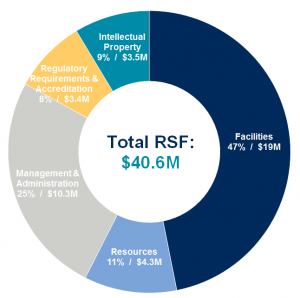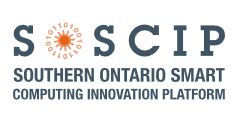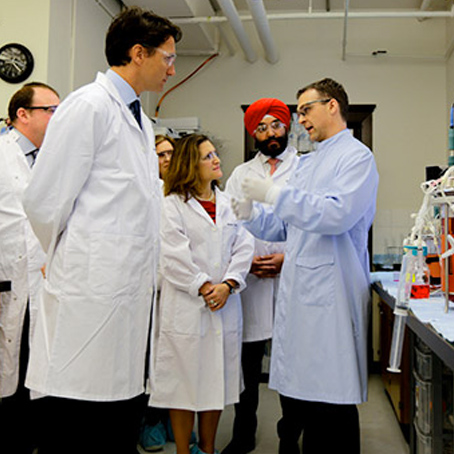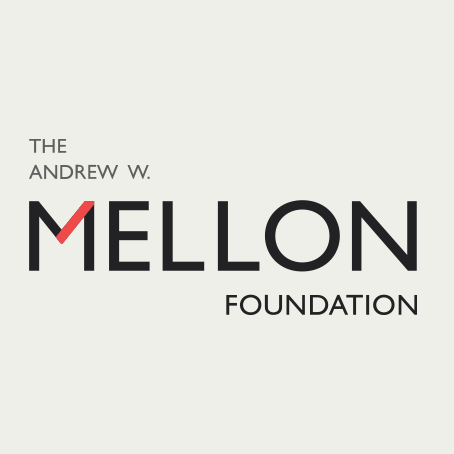Every year U of T researchers and innovators are successful in securing an extraordinary amount of funding from a variety of sources including the federal and provincial governments, the not-for-profit sector, private-sector organizations, and national and international research and philanthropic foundations. That funding enables U of T to continue to generate the knowledge and tools needed to address the most pressing issues confronting Canadians and humanity.
U of T continues to lead Canadian universities in securing funding through competitive and peer-reviewed federal government sources. This funding is critical to enabling our faculty to extend the boundaries of knowledge.
Comparisons with top performing Canadian peer institutions demonstrate our success in attracting research funding from these key sources. In 2014-15, U of T secured 15.4% of Tri-Agency funding, which provided approximately one-third of our total sponsored research funding. This market share is crucial because it is the primary driver for allocating other federal research investments including the Canada Research Chairs, the Research Support Fund and a portion of the Canada Foundation for Innovation (CFI) funding.
Market share of Tri-Agency funding to U15 universities (2014-15)
Shares of Tri-Agency Funding (%)
CIHR
NSERC
SSHRC
Tri-Agency
Data sources: CIHR expenditures by University and Program Category, 2014-15 report; NSERC Awards Database and SSHRC Awards Search Engine. Based on government fiscal year, April to March. Funding for the Networks of Centres of Excellence nodes, the Canada Research Chairs program, the Research Support Fund, the Canadian Microelectronics Corporation (NSERC funding held at Queen’s) and the Canadian Microelectronics Corporation (NSERC funding held at U Saskatchewan) are excluded. Partner hospitals and affiliates data are counted with each university.
U of T and its partner hospitals also continue to lead in CFI awards, securing 12% of the funding awarded from 2010-2015. Since the Agency’s inception, U of T has leveraged more than $2 billion in research infrastructure from CFI and collaborating agencies such as Ontario’s Ministry of Research and Innovation. As a result, U of T researchers, trainees and partners have access to some of the most advanced research tools in the world. Research funding from CFI, in partnership with provincial agencies such as Ontario’s Ministry of Research and Innovation, supports the establishment and operation of world-class research facilities, making it possible to provide superior research training opportunities, and to attract and retain research leaders.
Market share of Canada Foundation for Innovation funding to U15 universities (2010-11 to 2014-15)
The University of Toronto’s CFI share of funding is 12% over the past five years.
Data sources: CFI website, projects funded database updated July 12, 2015. Based on government fiscal year, April to March. National projects excluded. Partner hospitals and affiliates data are counted with each university.

In addition to securing research funding to support our direct research costs, our funding landscape requires us to ensure we leverage all available resources in order for us to remain competitive. Recovering the full costs of research is an important budgetary and advocacy issue. Each year, the U of T Planning and Budget Division undertakes a detailed analysis of the institutional costs associated with supporting our research enterprise. These include real costs associate with building occupancy, information technology infrastructure, financial and human resource management, libraries, etc. The analysis for such indirect costs has been refined over several years and is a reliable and well-documented approach to expressing them as a percentage of direct research costs. The most recent analysis indicates that for each direct dollar of research expenditure, 58.3 cents is required in indirect research support. The figure shows the allocation of indirect costs into the eligible categories for the funding provided by the Federal Research Support Fund, 2014-15.
Prestigious national and international grants
U of T faculty continue to be successful in securing prestigious national and international grants. In 2015 U of T received a $114 million research award – the largest single research award in the University’s history – from the inaugural competition of the Canada First Research Excellence Fund (CFREF) – for our Medicine by Design initiative. CFREF is a new major peer-reviewed funding program that helps competitively selected Canadian postsecondary institutions turn their key research strengths into world-leading capabilities. The award builds on our internationally recognized excellence in research and innovation in regenerative medicine.
Industrial funding and partnerships
Industrial funding and partnerships are also vital to many of our researchers. These collaborations provide funding that enables U of T researchers to extend the boundaries of knowledge; in turn, innovations developed by U of T researchers provide industrial partners – especially small-to-medium-sized enterprises – with access to new technologies and expertise that would otherwise be beyond their reach. One indicator of the importance that our researchers attach to such collaboration is the fact that U of T leads Canadian universities for private-sector research funding.
 One of many noteworthy successes is U of T’s involvement as a founding member of the Southern Ontario Smart Computing Innovation Platform (SOSCIP), which supports collaboration between academic researchers and industries using advanced computing and big data analytics. SOSCIP is a novel combination of state-of-the-art high performance, cloud, and agile computing resources located at U of T and Western University, as well as distributed collaboratories for undertaking research and development that engages both academia and industry. SOSCIP is a unique innovation model that supports Ontario as an innovation hub in areas that are critically important to society:
One of many noteworthy successes is U of T’s involvement as a founding member of the Southern Ontario Smart Computing Innovation Platform (SOSCIP), which supports collaboration between academic researchers and industries using advanced computing and big data analytics. SOSCIP is a novel combination of state-of-the-art high performance, cloud, and agile computing resources located at U of T and Western University, as well as distributed collaboratories for undertaking research and development that engages both academia and industry. SOSCIP is a unique innovation model that supports Ontario as an innovation hub in areas that are critically important to society:
- information and communications technology,
- health and health care applications, and
- smart urban infrastructure (water, energy, transportation).
In 2015, SOSCIP launched its second phase of operations and expanded its areas of focus to include advanced manufacturing, cybersecurity, digital media, and mining.
It also added new academic member institutions to the consortium and adopted as strategic priorities the identification of medium-sized companies to engage and a focus on commercialization. U of T received $85M in new funding on behalf of SOSCIP that will be used to increase access to advanced computing and big data analytics, tools and systems, and to develop new collaborative projects. FedDev Ontario provided $20 million in funding, and IBM Canada Ltd., the lead industrial partner of the consortium, will contribute $65 million of agile, advanced computing infrastructure and big data analytics as well as related support through research, IT and business expertise.
SOSCIP is being used in numerous ways:
Learn how we are informing local urban debates
Professor Eric Miller (Civil Engineering) is using the SOSCIP cloud analytics platform to develop computer models that analyze overall travel demand in urban areas to enable the design of future urban regions that moves people and goods more efficiently and increases economic productivity and social well-being. His models are currently used by municipal governments to help ease traffic congestion in the Greater Toronto Area (GTA).
Learn how we are engaging COP21
Professor Richard Peltier (Physics, and Scientific Director of SciNet) and collaborators are using the SOSCIP IBM Blue Gene/Q supercomputer to create climate models that simulate regional changes in climate up to 20 years into the future to accurately track and predict climate change in southern Ontario’s Grand River Watershed. The more general goal of the work is to develop models that can be used to identify what needs to be done to mitigate the impact of climate change on water resources.




